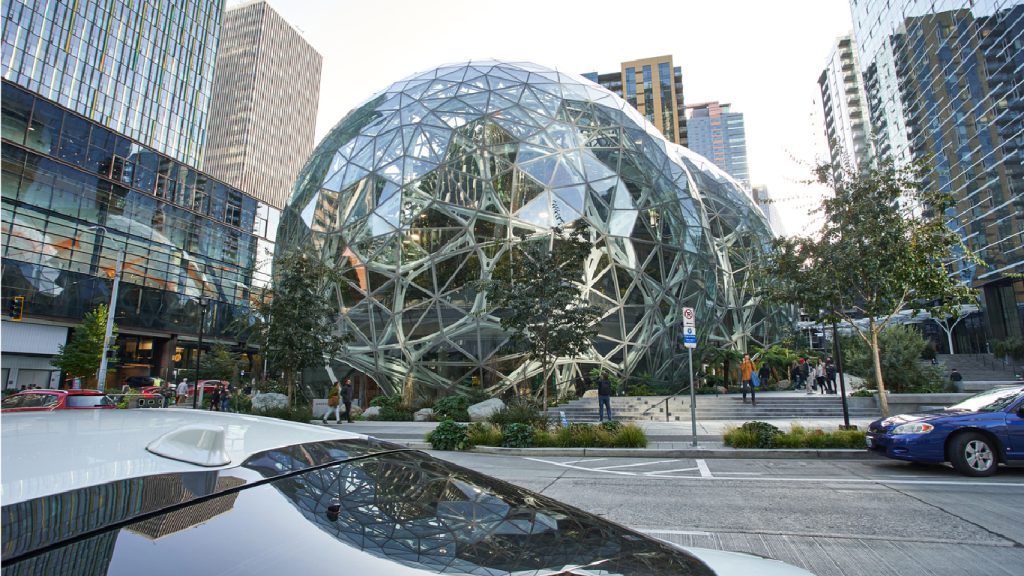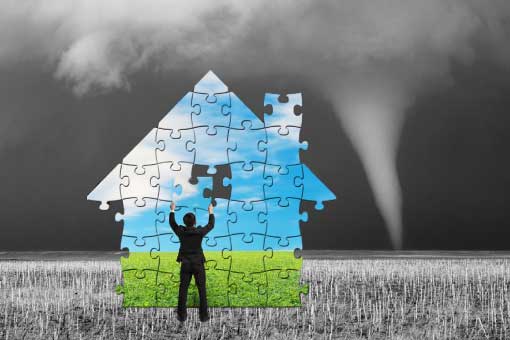The social, environmental and technological challenges for the commercial real estate sector are significant. Many building owners and managers are still adjusting to the disruptions of the COVID pandemic, lock downs, remote working, mask mandates, rising energy costs and the move to hybrid work models. Few, if any, anticipated these events, nor the dramatic shifts they would kick start in building management and design.
On top of quickly developing social changes, there’s the long-term environmental impacts of global warming. Much of the planet is already feeling the implications of rising temperatures with increased flooding events, stronger storms, and eroding coast lines. All pose specific risks to property owners, since 10% of the world’s population lives in coastal areas that are less than 10 meters above sea level, according to an UN fact sheet.
Increased migration to cities and urban areas is spurring building development to a faster pace. The World Economic Forum estimates that two-thirds of the global population is expected to live in cities by 2050 and already an estimated 800 million people live in more than 570 coastal cities vulnerable to a sea-level rise of 0.5 meters by 2050. Technological advances pose yet another challenge to commercial real estate owners, as many feel the pressure by market competition and new government regulations to adopt energy and time saving building tech.
Given these social, environmental and technological challenges, it would seem change itself is becoming increasingly accelerated and unpredictable. Making things worse is the fact that we know less about the extent to which these factors affect each other. A warmer climate makes future pandemics more likely, which increases remote working, which reduces greenhouse gases. But higher temperatures also increase HVAC demand, which increases energy usage and greenhouse gases.
The entire system is connected, and each component poses a significant challenge in its own right; however, when combined, they will undoubtedly produce unforeseen outcomes that require quick course corrections at best, and entire paradigm shifts at worst.
While no one can predict the future, they can position themselves and their properties to better manage the unknown unknows. One way to stay flexible and adaptable is to adopt automated building controls built on open source protocols. Open building systems benefit from more technological flexibility, which can act as an important hedge against uncertainty.

Open System Protocols: A Short History
In the late 70’s early 80’s, large companies like Siemens, Johnson Controls and Honeywell took the first steps in connecting systems through electronic networks. Each brand developed proprietary “languages” or protocols that allowed building components like HVAC, lighting and alarms to “talk” to one another. While this created an efficient, dependable and integrated system, it also locked each property owner into the company’s proprietary hardware and software. And since connected systems were intended to last a decade or more, owners had little flexibility for innovation and change. In fact, it was the building systems provider that determined the speed and quality of that change.
Later in the mid to late 90’s, new organizations and companies like Tridium would introduce open protocols like the Niagara Framework, BACnet and LonWorks. These component languages didn’t limit owners to one brand by speaking one language. Instead, they could “interpret” between the other protocols, freeing owners to mix and match brands. Being “open” now meant property owners and managers could change the way they invested and used building technology.
Today, open protocols are a key play in helping evolve the next generation of automated building systems via IoT devices and smart building technology.
Open Systems and Adaptability
With open protocols, owners and managers can adapt quickly to market trends. With propriety systems, you’re locked into one manufacture’s software and hardware. Making upgrades or replacing components can be more costly than an open system. That’s because an open system is much like an open market. The more companies that compete for your business, the lower the price. Having the choice to shop around gives you budget flexibility to stay solvent sudden market fluctuations.
Quality is also affected. With open building systems, you can expand your search for new building systems and components outside a single contractor—who may or may not have the best quality available—and pick the best-of-breed tech. Component quality can vary based on priority, but open systems provide more flexibility for bigger investments. High quality investments are often long-term investments, so CAPEX projects also become easier to plan and deliver.
From a budgetary perspective, the best adaptability feature of open building systems is the ability to connect new devices to older systems. Open systems offer better ROI on legacy components. Building owners can realize their full technology investment by extending the life of older systems, while also adopting new solutions to keep them competitive.
Open source also makes it easier to customise your building systems. Non-proprietary protocols are valuable tools for developers and engineers to create bespoke solutions for the specific needs of their customers. Since connecting devices is easier, solutions are faster to develop, keeping you nimble and on-budget.

Building Brand
Many of today’s biggest brands extend beyond their name recognition and marketing to include their physical properties. From Amazon’s Biodomes to Apple’s Spaceship, today’s corporate facilities and HQs are as much a part of the corporate brand as the logos themselves. But future businesses need not be on the Fortune 500 list to feel the necessity of such architectural recognition. Trends are already moving there fast, as post-pandemic attitudes toward workplace safety, air-quality and hygiene become part of a business’s social contract with its workers and communities. The safety and security occupants feel about a facility speaks volumes about those who own and lease its spaces.
In a recent episode of DCTV, Mitchell Day of Distech expressed the idea that a building is essentially a fundamental representation of a brand’s core values:
“A building is no longer just where you work,” he states. “A building expresses to the public who you are as a company, how you want [the public] to see how you see your employees and your products and who you want to be to the rest of the world.”
Day’s statement not only reflects the growing importance of facilities in general, but it also signals a shift in attitudes towards buildings as a core part of corporate responsibility. Today, brands feel more pressure than ever to adopt sustainable manufacturing processes, low-carbon footprint buildings, alternative energy sources and social responsibility. How a building functions, its efficiency and connectivity are indicators of that responsibility.
Open building systems offer the flexibility to adapt to cultural expectations. As Day himself says: “Open systems provide the power to give people more choices on how they express their brand.”
The Future is Complexity
It’s often said that buildings are “living” things, formed from complex systems working together to produce a habitable and safe environment for occupants. It’s an apt analogy, yet “complexity” is relative. With every passing year, emerging technologies like system integration, IoT, machine learning, smart tech and next gen sensors are making the dream of true system unification a reality. Tech is evolving at such a rapid pace it’s likely in a decade or two, today’s buildings may be likened to single-celled organisms by comparison. The entire “carpentered-world” will seem much more fluid.
While there are downsides to complexity to be sure, one of the biggest upsides is adaptability. The more complex, the more tools you have, and the more nuanced your approach can be. Complexity and connectivity are what property owners, and their buildings, will need to adapt to the challenges of future pandemics, energy transitions and global warming. Open building systems help building owners and managers manage such complexity.
Sources
The Ocean Conference Factsheet: People and Oceans. United Nations, New York, June 5th 2017.
The Global Risks Report 2019. World Economic Forum. 14th ed. Accessed March 2022.

